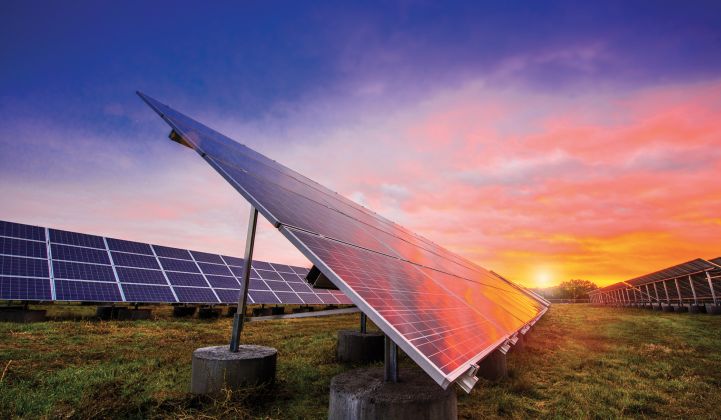Xcel Energy Colorado submitted an electric resource plan to state regulators Wednesday, calling for a major new build-out of renewable energy resources and the retirement of two coal units, roughly a decade early.
Comanche Units 1 and 2 are capable of producing a combined 660 megawatts of coal-fired generation, which represents approximately one-third of Xcel Colorado’s remaining coal fleet. Under the utility’s proposal, the retirements would coincide with adding more than 1,800 megawatts of solar and wind, paired with 275 megawatts of battery storage, and 383 megawatts of existing gas assets.
In a business-as-usual scenario, Xcel Colorado would keep the Comanche units in operation and add 450 megawatts of additional energy resources. While the economic benefits of both plans are reasonable, the clean energy proposal is more compelling because “it delivers lower costs along with substantial environmental and renewable energy gains,” the filing states.
Ben Fowke, president, chairman and CEO of Xcel Energy, Xcel Colorado’s parent company, teed up the clean energy plan on stage at the EEI Annual Convention in San Diego, shortly before it was officially announced.
“We have plans in Colorado…that will have us at a 60 percent carbon reduction and 55 percent renewable energy by 2026,” he said, adding, “at no incremental cost.”
At Xcel Energy’s Midwest utilities, “we think we can achieve even more sensational carbon reduction goals,” Fowke said. “We'd like to talk about carbon-free energy by 2030 at 85 percent.”
That forward-looking plan includes a major expansion of renewable energy, but it relies on maintaining Xcel’s Midwestern nuclear power plants, he added — noting that he supports "much if not all" of what Exelon CEO Chris Crane had to say about nuclear power. Coal, meanwhile, is on the way out.
“I will tell you, it's not a matter of if we're going to retire our coal fleet in this nation, it's just a matter of when,” Fowke said.
Under Xcel Colorado’s clean energy plan, the utility intends to invest $2.5 billion across eight counties, which is expected to achieve customer savings of approximately $215 million on a net present value basis, relative to the business-as-usual plan.
The favorable economics are influenced by the following factors: 1) a robust pool of low-cost renewable bids; 2) access to transmission, thanks to early coal retirements; and 3) low-cost gas and battery bids that offer both flexibility and help meet peak resource needs.
In January, the utility released the results of a solicitation that returned a median price bid of $21 per megawatt-hour for wind-plus-storage projects and a median bid of $36 per megawatt-hour for solar-plus-storage.
Bids highlighted in Xcel's new electric resource filing are even lower. The proposal includes "unprecedented low pricing" across a range of generation technologies, with wind at levelized pricing between $11-$18 per megawatt-hour, solar between $23-$27 per megawatt-hour, and solar-plus-storage between $30-$32 per megawatt-hour, the document states.
The clean energy plan includes four wind projects totaling 1,131 megawatts, three solar-plus-storage projects totaling 560 megawatts, and two solar-only projects totaling 147 megawatts, in addition to the two existing gas-fired projects totaling 383 megawatts.
One of the Comanche coal units would be retired in 2022, 11 years early. The other would be retired in 2025, 10 years early.
Through the combination of renewables, gas and energy storage, Xcel expects to increase system reliability, even as coal generation comes offline.
As utilities like Xcel transition to cleaner energy resources, Fowke noted that a growing number of cities and communities are setting targets to get all the way to 100 percent renewable energy — which isn’t easy, he said.
“We are making an enormous transition and renewables will play a big role in that,” said Fowke. “But to me, it's not just renewables. The endgame is carbon reduction in the most affordable, pragmatic way possible.”
For Xcel, the pragmatic way involves retiring coal generation, while maintaining natural gas and nuclear assets — at least for now.
“We are never going to sacrifice reliability and affordability, and a lot of times infrastructure trails transformations,” Fowke said. “So we have to be careful with that.”
Utility regulators will hold hearings on Xcel Colorado’s clean energy proposal later this year, with a decision expected in the fall.
Figure: Clean Energy Plan vs. Business-As-Usual Plan

This story was updated to include additional information from the Xcel filing, including technology pricing.




